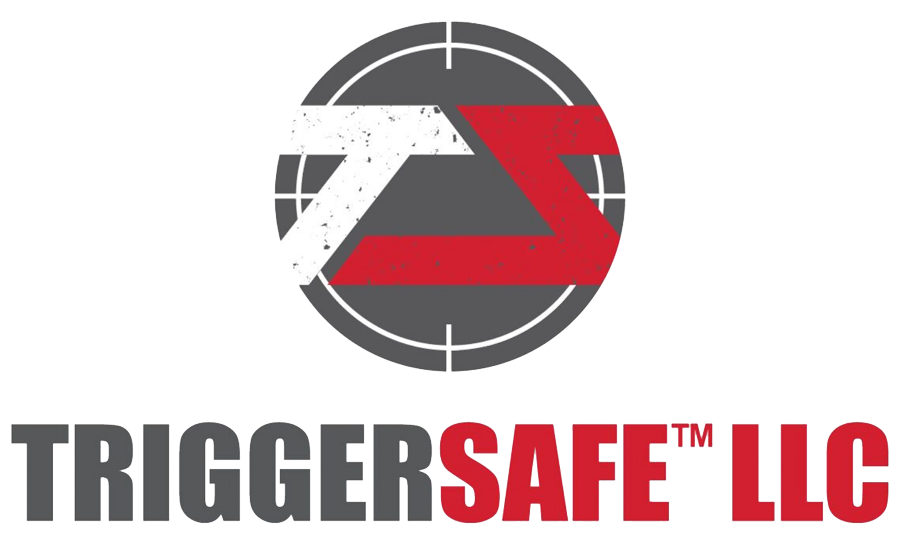When Does Triggersafe Help?
I would like to talk to everyone about the Triggersafe and how we came to design it and what we thought it would accomplish. As a new and innovative product, there is a natural tendency to dismiss something because of a lack of knowledge or information. This is my opportunity to help give information and knowledge about the Triggersafe. I would like to explain in more detail how myself and Vinny came up with the Triggersafe and how we believe it can help to prevent accidental or negligent discharges.
A little background on myself. Understand that I’m not into a lot of macho chest thumping B.S. (not my style). I just want to lay out a little of my life experiences so that the reader can understand my perspective.
I have worked for the Indianapolis Police Department for 25 years. Most of that time was spent on the street at night in a rough part of town. I have spent 18.5 years on our SWAT team. My last four years have been spent at the range as a full-time instructor. I have trained thousands of officers on firearms over the years.
I have completed over 2000 operations on the team to include warrant service, barricaded persons, vehicle takedowns, K9 tracks, hostage rescues, and others. I have been involved in numerous critical incidents over the years including three lethal police action shootings with the last one occurring in 2014 while carrying an MP-5. (We can argue weather that is a long gun later. Ha-ha) I was also a Deputy U.S. Marshal in Washington D.C. from 1990 – 1992.
The genesis of the Triggersafe came from what everyone knows happens but we tend not to debrief much, negligent or accidental discharges. We know they occur, we just chalk it up to “stuff happens” if no one was hurt. As a professional, I believe we should not just say “stuff happens” but rather we should review, debrief and understand what occurred to avoid having it happen again.
For Triggersafe LLC, an accidental discharge on the team led to a discussion which led to Vincent going home and using Kydex to make a prototype. Several months and much hard work later, Triggersafe was manufactured.
Triggersafe can be what you think it should be. Because it is new and nothing really existed for an AR platform like it before, it’s uses may not be that evident. Triggersafe covers the trigger and prevents it from being pulled, period. So how is that useful? Triggersafe is not a locking system. You should use a lock or safe for long term storage or protection.
Triggersafe should be considered for those times when we don’t have positive control, meaning our hands are not on the weapon. What times might that include?
Depending on how you use your weapon, there are many times a Triggersafe would make sense. For many shooters, we go to the range, shoot, then go home. During that time, there may be several instances where our hands may not be on the rifle. If we lay a weapon down, loaded or not, you could use a Triggersafe. If you let your weapon hang on a sling and your hands are not on it, you could use a Triggersafe. The Triggersafe doesn’t mean the weapon is safe and empty, it just prevents someone from pulling the trigger without removing the Triggersafe.
If you train other people in the use of the rifle, ask yourself if there are times the Triggersafe would help. I have been involved in Patrol rifle classes with twenty students in the class. Having a Triggersafe that I can see up and down the line at times would be nice.
Practicing movement drills with a weapon is important. Drills like large building clears, entry drills, stairway movement, open air movement, bounding over watch etc. are important. While some teams might utilize blue guns or other items, I want to practice those movements with the weapon I will carry. Having safety protocols are imperative. Having a safe and empty weapon and chamber block are critical. Ask yourself why wouldn’t you want a Triggersafe in conjunction with a chamber block. You can see a Triggersafe from both sides of the weapon. And again, even though it doesn’t make a weapon safe and empty, it does prevent someone from pulling the trigger accidentally and can be seen by everyone training.
Have you ever travelled in a vehicle with a weapon slung up? Enroute to a high-risk warrant service with twelve guys in a van all slung and loaded can be interesting. Having a Triggersafe in place and then removing it two blocks out would be safer.
Have you ever been on a perimeter with a slung and loaded weapon and rotated out to rest and hydrate for 30 minutes? Drinking water and stuffing food in your mouth with a loaded gun slung on you would be safer with a Triggersafe in place.
I have laid down on the ground or in the armored vehicle with my weapon on my chest to grab a nap while on the perimeter. A Triggersafe in place would have been a smart, professional choice.
I have had to strip off gear to go into confined spaces (attics, crawlspaces) and have laid my weapon in the van and told the tac medic to watch it. A Triggersafe in place would have been safer for everyone.
I have carried a shotgun up to the door for breaching rounds and had my weapon on my back for entry. A Triggersafe in place would have been safer.
Those are just some of the valid times a Triggersafe might be appropriate. In the end, each rifle professional will make the decision on if they think the Triggersafe is helpful at times. Whatever your final opinion of the Triggersafe is, we hope you stay safe and train hard.
